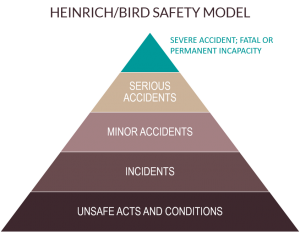Last year (2019), in the state of Massachusetts, a little over 1,600 new workers compensation cases were filed. A number representing a very small percentage of the Massachusetts employment rate which is estimated at over 3.7M individuals. Good job Massachusetts, you’re staying safer at work!
However, we must turn our attention to those who were in fact injured on the job, and more specifically, those catastrophically injured. Employers, Claims Adjusters, insurance companies and third-party administrators are equally devastated at the thought of an individual who’s suffered a catastrophic injury. As industry professionals familiar with catastrophic injury cases, you’re aware that these cases are challenging, emotional, and require a high level of expertise to appropriately manage. The individual’s life is forever impacted, and it’s your job to get them through some of the toughest obstacles on the road to their recovery.
So, what exactly is a catastrophic injury?
The formal definition of a catastrophic injury, as defined by the Commission for Case Manager Certification is “a serious injury that results in severe and long-term effects on the individual who sustains it, including permanent severe functional disability”. Examples include traumatic brain, spine, or spinal cord injury; multiple trauma; and loss of major body parts. They further define a catastrophic illness as “any medical condition or illness that has heightened medical, social, and financial consequences and responds positively to the control offered through a systematic effort of case management services.
According to the National Institute of General Medical Sciences, there are two main types of trauma first, blunt force trauma – when an object of force strikes the body, often causing concussion, deep cuts or broken bones. The second, a penetrating trauma – when an object pierces the skin or body, usually creating an open wound.
The legal definition of a catastrophic injury, per Title 42, of the U.S. Public Health and Welfare Code § 3796b is “an injury, the direct and proximate consequences of which permanently prevent an individual from performing any gainful work”.
Combining the case management definition, the medical definition of a trauma, the legal definition of a catastrophic injury, and a general understanding of a catastrophe; within workers’ compensation, we define a catastrophic injury as an injury that causes loss or alteration of function that may result in an alteration of the patient’s present life and function permanently.
Varying levels of injury, severity, and corresponding care

Within all injuries, there are varying levels of severity and corresponding care. The Heinrich/Bird safety pyramid, or accident triangle, provides a visual which helps us understand the ratio between fatal occupational accidents, catastrophic or major accidents, accidents, injuries, and minor incidents. For the purpose of this article, we use the accident triangle to provide visual demonstration, and neither fully support nor challenge the theories within the Heinrich/Bird Safety model. From the model, and Heinrich’s theory, catastrophic injuries will happen, and at a rate far less than those of minor injuries, or workplace incidents.
Catastrophic injuries are found in the highest points of the pyramid, and are usually categorized as a physical injury, a spinal cord injury, or a cognitive injury. A study conducted by Aon, of more than 400 companies, found that catastrophic injuries generally account for .5-1 percent of claim frequency yet 20-30 percent of total incurred cost.
Catastrophic cases can be volatile due to the high degree of medical instability during the acute phase of the injury. To manage case volatility and improve outcomes for all, the case should be referred to a seasoned catastrophic nurse case manager immediately. A seasoned catastrophic nurse case manager will have extensive knowledge specific to the injury while also providing significant case insight regarding the diagnosis, treatment, medical complications and recovery trajectory.
The role of the worker’s compensation nurse case manager within the catastrophic injury care continuum
When a worker is catastrophically injured anticipate that the number of people and professionals involved in the individuals care and rehabilitation will be significant. Each person will have varying levels of information and understanding about what has happened, what’s going to happen, and how to best support the individual and family through stabilization and rehabilitation.
During the medical stabilization and rehabilitation process, the primary role of the workers’ compensation case manager is to provide ongoing evaluation while becoming the educator, master communicator and trusted advisor to the individual, their family, their employer, and the adjuster managing the case.
Evaluation
Nurse Case Managers utilize the Nursing Process to evaluate the entire person. With a catastrophically injured patient this is an ongoing process throughout the case management relationship and is critical in identifying new diagnoses and facilitating necessary changes to the individual’s care to improve outcomes. The nursing process includes consistent assessment, diagnosis, outcome identification, planning, implementation and evaluation of the patient’s plan of care. Vital to this process is the nurse’s diagnosis, or clinical judgement concerning a human response to a health condition/life processes, or vulnerability for that response. Nurses diagnose health problems, risk states and readiness for health promotion. Once diagnoses have been identified, then outcome identification planning and interventions can be determined.
Education
A critical responsibility of the catastrophic nurse case manager is providing education to the impacted individual, their family, their employer and the workers’ compensation claims adjuster. The likelihood that any of the parties involved, aside from the individual’s medical team, have had experience with the patient’s unique diagnosis is slim to none. What happened? How’s this going to impact the remainder of my life? Who’s available to help me? Why am I being prescribed this treatment? Why do I need to see this doctor? If the patient is not asking these questions, then the family will or should be.
In catastrophic injuries, improving health literacy also improves the patient’s self-efficacy. “One’s sense of self-efficacy plays a major role in how one approaches goals, tasks, and challenges regarding one’s health”. In a 1999 study ‘Injured Workers’ Perceptions of Case Management Services’, participants shared perceptions of their experience with nurse case managers. One participant shared:
“One of the things that helps a lot in these cases…is having somebody that’s educated and knows what your problems are more than you do or even your doctors, because you’re usually seeing specialist…Somebody has to put all this together”.
In the catastrophic injury cases, education is also crucial in the management of the injury. The catastrophic nurse case manager serves as the liaison between the claim adjuster, treating physicians, rehabilitation specialist, patient and family, and others within the patient’s care continuum. Deepening knowledge reduces barriers and time, which improves patient access, and inevitably improves outcomes.
Communication
As an educator the communication role of the catastrophic nurse case manager may seem obvious yet, it’s important to understand the ‘when’ and ‘how’ information is provided has a significant impact on patient outcomes and the case in its entirety. The catastrophic nurse case manager must maintain a continuous communication feedback loop among all parties involved. Oftentimes there are multiple health care providers involved in treatment of an individual with multiple life-threatening injuries. Continuous communication between providers can make a significant impact on preventing complications and facilitating timely resolution to health issues. Once the individual is out of the acute care phase and in the healing and rehabilitation phase of their injury, prevention of complications is the focus of all treatment, as well as promotion of maximum independence which leads to maximum quality of life.
Compassion and Care (Trusted Advisor)
While the catastrophic nurse case manager may present in regular clothes, and much of their work is done outside of the Acute or Rehab hospital, they are still nurses with a duty of compassion. This approach is key to developing a trusting relationship. In a study published by the Journal of Clinical Nursing, authors share “Compassion unites people in difficult times and is a foundation to building human relationships which can promote both physical and mental health. Effective interaction with individuals that are critically ill, and their families, in such a stressful time in their lives, is a special skill. There is a fine balance between education and support, and intrusion. Early interaction with the individual and/or the family of the injured worker can assist in decreasing their anxiety regarding the situation and assist in developing a bond needed to establish a successful relationship. This is key for long term case management, minimizing and preventing complications, and achieving optimal outcomes.

Case Study – The first steps to a long journey of recovery
A 50-year-old male communications technician high on a ladder, resting against a telephone pole, falls 25 feet to the ground. He was sent to the closest trauma center via med-flight where his diagnoses included: Fractured left leg, head injury, C4-5 Acute Disc herniation resulting in Tetraplegia, Neurogenic shock. He had no sensation or motion from the shoulders down. This patient was alert…
References:
Office of Workers’ Compensation Programs (OWCP); EEOICP Program Statistics (Massachusetts)
Commission for Case Manager Certification: Glossary of Terms, www.ccmcertification.org
Findlaw: – 42 U.S.C. § 3796b – U.S. Code – Unannotated Title 42. The Public Health and Welfare § 3796b.
Heinrich, H.W., Industrial Accident Prevention: A Scientific Approach (1941)
International Risk Management Institute: Managing Volatility in Catastrophic and Medically Complex Cases
International Risk Management Institute: Managing Volatility in Catastrophic and Medically Complex Cases
NANDA-I, 2013
Patrick, Timothy E et al. “Improving health outcomes through patient education and partnerships with patients.” Proceedings (Baylor University. Medical Center) vol. 30,1 (2017): 112-113. doi:10.1080/08998280.2017.11929552
American Association of Occupational Health Nurses: Workers’ compensation: case management strategies, 1995 May;43(5):245-50.
Bramley, Louise, and Milika Matiti. “How does it really feel to be in my shoes? Patients’ experiences of compassion within nursing care and their perceptions of developing compassionate nurses.” Journal of clinical nursing vol. 23,19-20 (2014): 2790-9. doi:10.1111/jocn.12537

